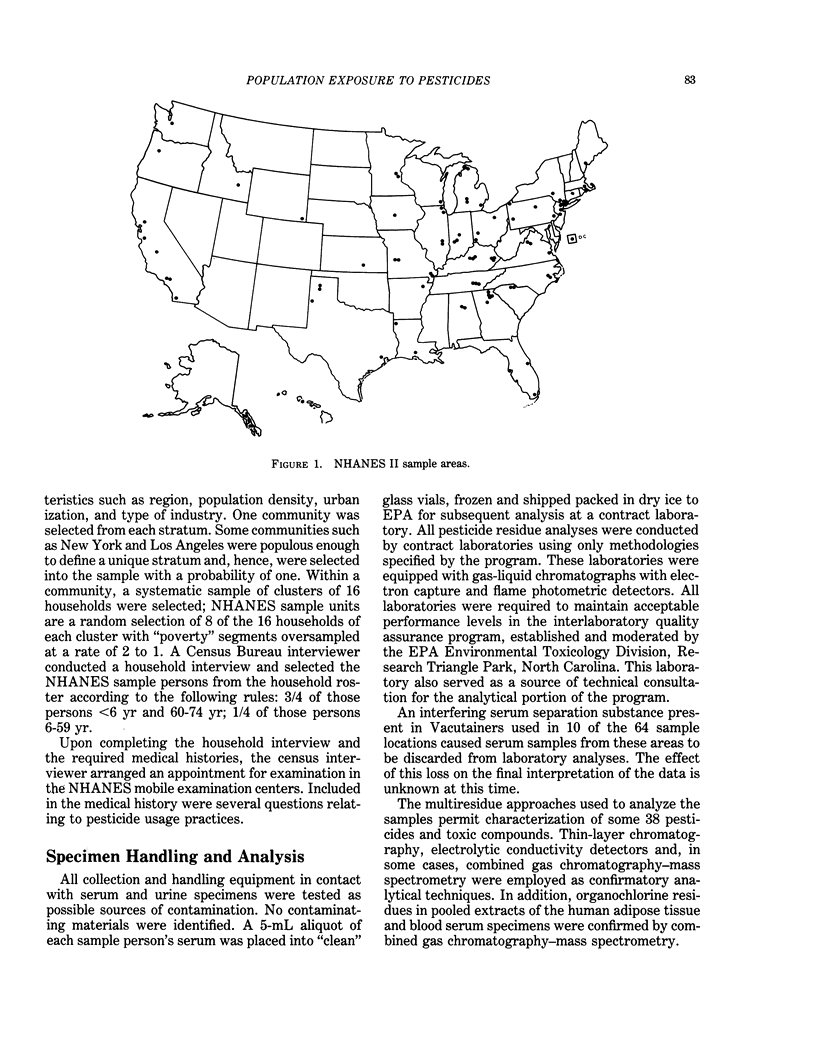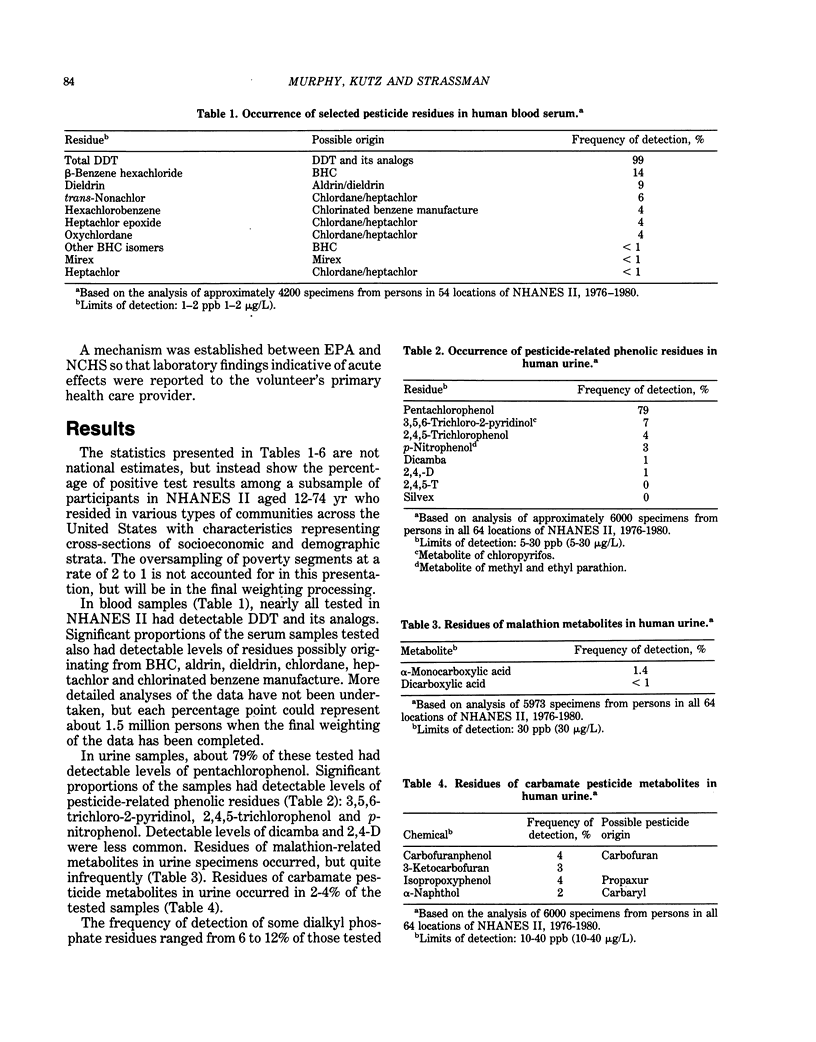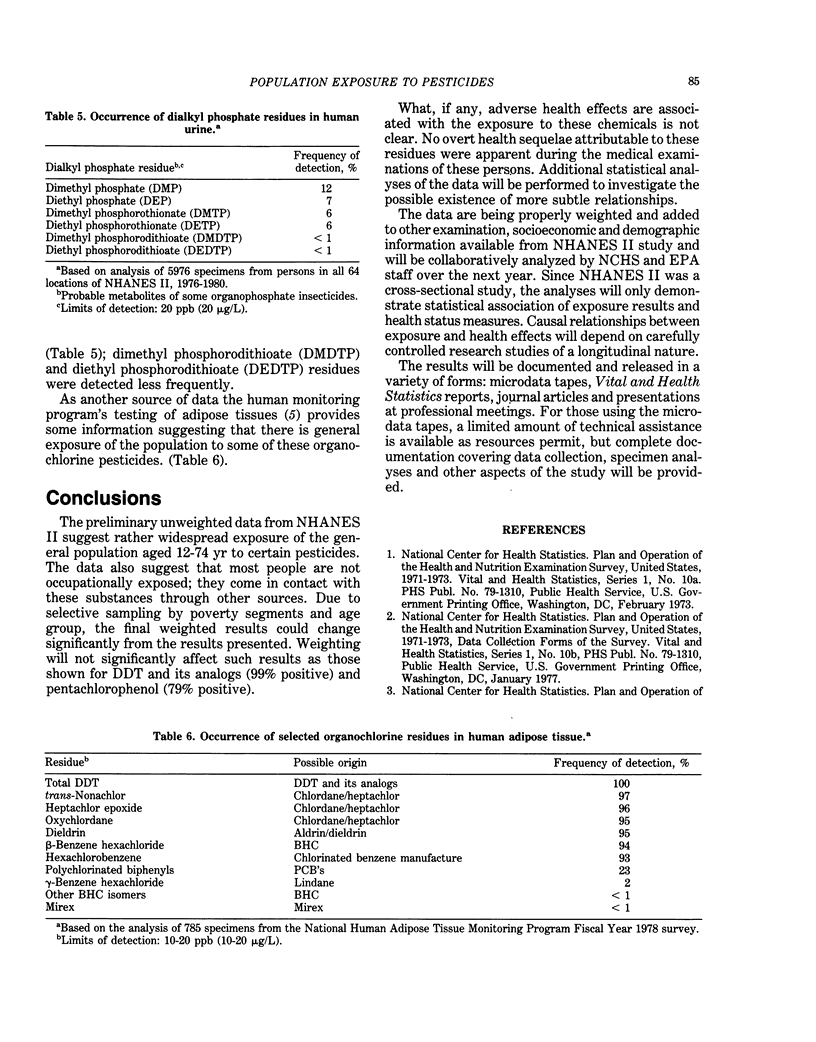Abstract
The National Center for Health Statistics collaborated with the National Human Monitoring Program of the U.S. Environmental Protection Agency (EPA) in a four-year study to assess the exposure of the general population to selected pesticides through analysis of blood serum and urine specimens. Specimens were collected on a national probability half sample of persons 12-74 years of age from 64 locations across the United States comprising the sample areas in the Second Health and Nutrition Examination Survey (NHANES II) and analyzed for selected organochlorine, carbamate, chlorophenoxy and organophosphorus pesticides. Medical, nutritional and pesticide usage data are also available for each sample person. Preliminary results of the blood serum and urine analyses indicate that the general population is being exposed to some of these types of pesticides. Since 1970, EPA has conducted a national probability sampling of human adipose tissue. Specimens obtained on a survey design representative of the general population were analyzed for selected organochlorine pesticides and toxic chemicals. Findings from the 1978 survey also indicate exposure of the general population to some of these chemicals. Medical data collected from both surveys have yielded no overt correlations between health effects and residue levels. More intensive statistical analyses are underway to investigate the possible existence of more subtle relationships.
Full text
PDF







